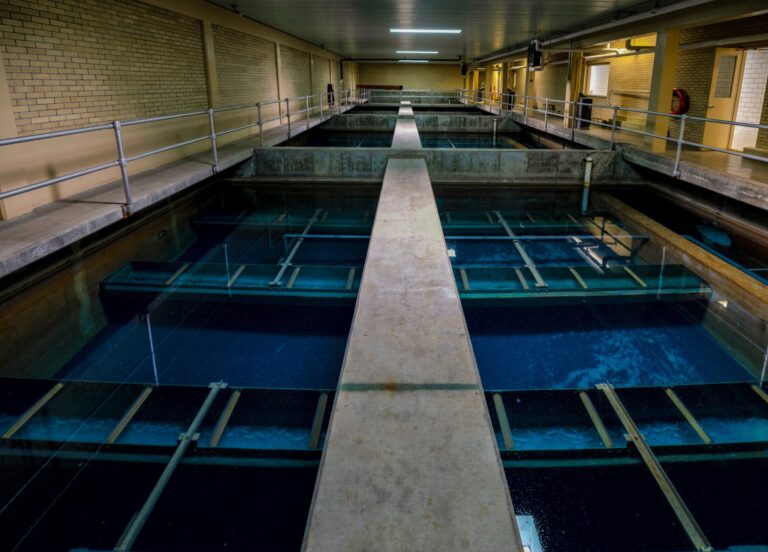A national class-action settlement could provide funding to remove PFAS chemicals from drinking water. Photo © J. Carl Ganter/Circle of Blue
Decision needed soon for funds to remove toxic chemicals from drinking water.
In? Or out?
Thousands of water utilities across the Great Lakes region and nationwide will decide in the next three months whether to join two multibillion-dollar, class-action settlements against the largest producers of toxic PFAS chemicals that have tainted drinking water supplies.
The settlements with 3M and DuPont, each having slightly different terms, could provide roughly 12,000 water providers with money to construct and operate facilities that remove the so-called “forever chemicals” from drinking water.
The settlements come as the U.S. Environmental Protection Agency is developing first-ever drinking water regulations for six PFAS chemicals. Those regulations will impose substantial financial burdens for utilities dealing with contamination. The settlements could provide money for construction, but also prevent future litigation against the companies.
“This is a complex set of issues with significant consequences,” Jeff Kray, managing partner with Marten Law, told Circle of Blue about the settlements.
The 3M settlement totals $12.5 billion while the DuPont settlement adds nearly $1.2 billion.
Those pots of money will be divided according to a two-factor formula: how much PFAS is in the water system and how much water does the utility treat? The source of the PFAS does not matter. More money is available for larger systems dealing with significant contamination. The two factors are intended as proxies for construction costs and operations/maintenance costs.
The settlements are “opt out,” which means that the 12,000 water providers that are part of the class are automatically bound by its terms, unless they opt out.
The deadlines for choosing not to participate are rapidly approaching. For the 3M settlement the opt-out deadline is December 11. For the DuPont settlement, it’s December 4.
For Kray, who represents water utilities in Washington and other states in PFAS lawsuits, the deadlines are an urgent matter. Utilities, he said, need to quickly assess their legal options and exposure to the chemicals. Otherwise they might miss out.
“You could have a situation where somebody is in the class, they never submit a claim form and get no money, but they are still bound by the settlement,” Kray said. “And that’s part of why it’s so important that these water providers pay attention, do so quickly, and get competent, professional advice, both on the technical and the legal side, to help them sort through this because it’s really challenging, and it’s going to affect them.”
Ann Arbor, Michigan, is one of those affected. The city installed a granular activated carbon treatment system in 2018-19 to remove PFAS. Replacing the carbon in the filters costs about $250,000 annually.
Brian Steglitz, Ann Arbor public services administrator, told Circle of Blue that the city is “carefully evaluating” whether to participate in the settlements.
“While a decision has not yet been made, we are evaluating the City’s past and estimated future costs to treat and remove PFAS from […]
Full article: www.circleofblue.org

